-
The tiger is member on the felidae family ,the largest of the four big cats in the genus Panthera . The Bengal tiger is traditionalliy regarded as the second largest subspecies after the Siberian tiger. The Bengal tiger is the most numerous of the tiger sub-species, with about 1,411 wild tiger being reported by the Government of India’s National Tiger conservation Authority.
- DISTRIBUTION : The Bengal tiger is a sub species of tiger primarily found in India and Bangladesh. They are also found in parts of Nepal ,Bhutan, Myanmar and southern, Tibet. The tiger lives in varied open jungles, humid evergreen forests and man grove swamps.
- FOOD : Bengal tigers eat a variety of animals found in their natural habitat, including deer, wild boars , water buffalo , gaur, nilgai,antelope, and occasionally other ungulates .
- Breeding : Mating can occur at any time but happens to be usually between November and April. The females can have cubs at the age of 3-4 years, males reach maturity in about 4 years . After the gestation period of 103 days ,2-5 cubs are born.
INDIAN TIGER
Panthera tigris
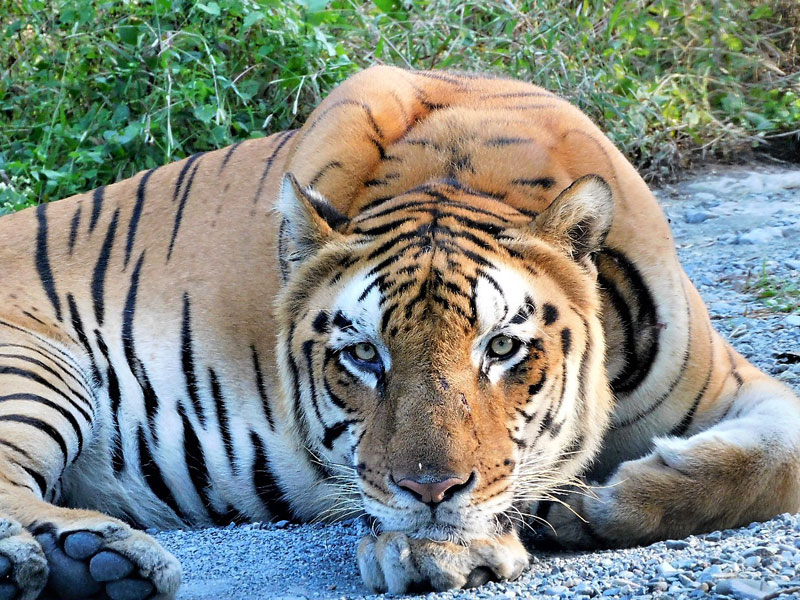
SNOW LEOPARD
Panthera uncia
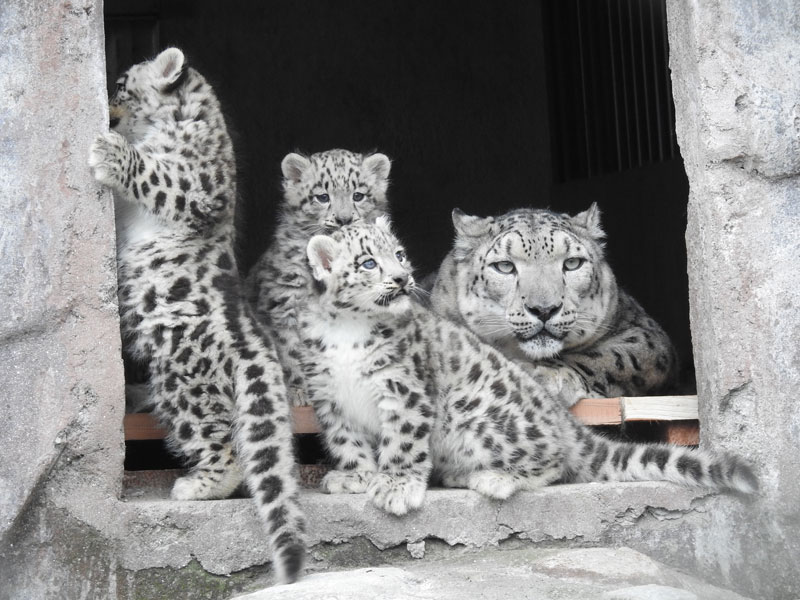
-
The Snow Leopard, is an extremely beautiful animal somewhat smaller (Head and Body : 100 – 110 cm; Tail : 90 cm) than a panther with a longer tail. It has thick long hair and dense, woolly under fur. Its thick fur keeps out the cold and the pale coloration of the hair provides it with excellent camouflage against the rocks and snow.
- DISTRIBUTION : A resident of the mountains, this beautiful animal is a rare and an exclusive predator of the Himalayas and other Central Asian Mountains. It inhabits alpine meadows and crags up to 15,000 ft. retreating to lower altitudes during the colder seasons.
- FOOD : It hunts by stalking and ambushing birds and mammals in these higher reaches.
- Breeding : Mating takes place around winter. Gestation period of 90 – 105 days, with 1 – 5 cubs born to the female in cracks or caves in rocks used as dens. Hunted primarily for its fur, an estimated 4000 to 8000 Snow Leopards remain in the wild
BLACK LEOPARD
Panthera pardus
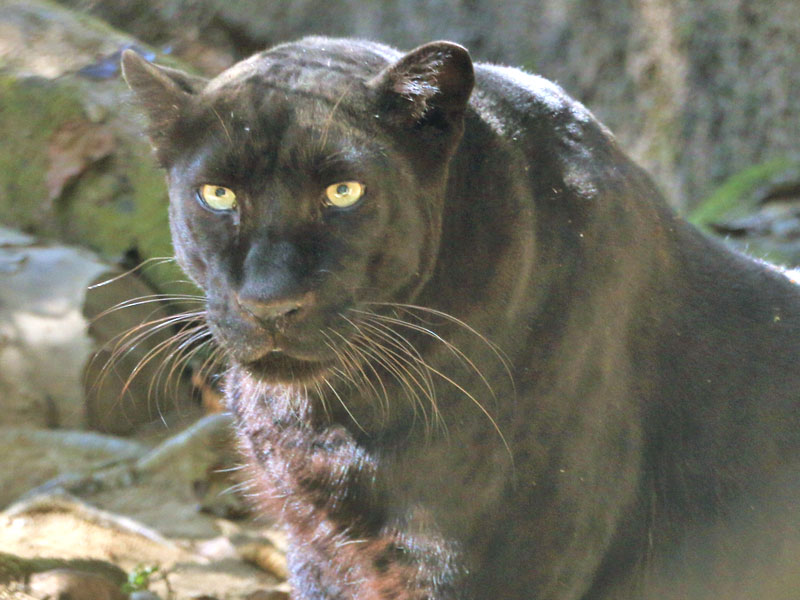
-
A black panther is a large black cat. Black panthers are melanistic colour variants of several species of larger cat. Melanism in leopards is conferred by a recessive allele. The typical markings are hidden by the excess black pigments melanin giving an effect similar to that of printed silk.
- DISTRIBUTION : Occurs most in certain parts of southern Asia and widely in Eastern and Central Africa.
- FOOD : They will eat just about anything. Their diet consists of monkeys, rodents, amphibians, birds, fish, wild pigs, and ungulates.
- Breeding : Depending on the region, leopards , many mate all year round Asia and Africa or seasonally during January to February Manchuria and Siberia . Gestation last for 90 to 105 days and little size is normally 2 to 4 cubs.
COMMON LEOPARD
Panthera pardus
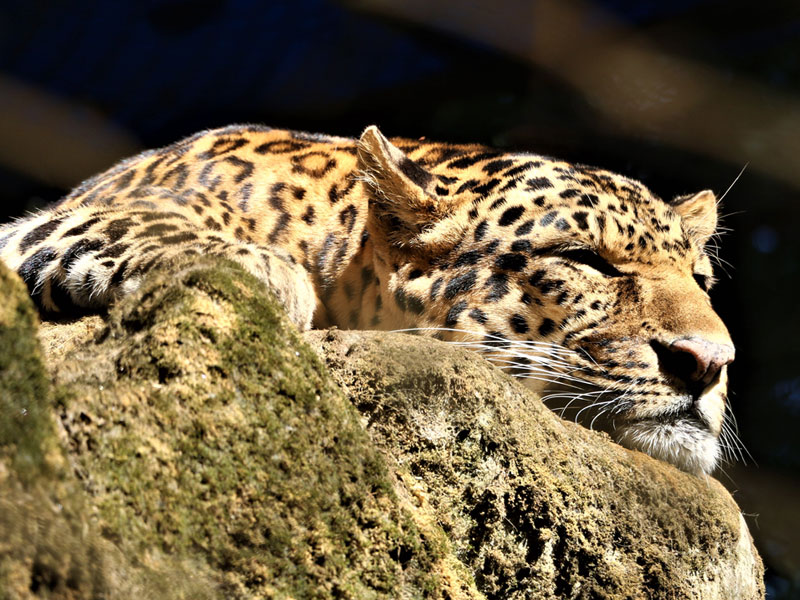
-
Though the common leopard could be confused with the jaguar, the jaguar is less stocky and have its rosette patterned marking on its coat with no internal spots.
- DISTRIBUTION : Indian subspecies of common leopard is widely distributed in India, extends into Nepal, Myanmar and Sri Lanka. In Himalayas found upto an altitude of 3000 mts.
- FOOD : Leopards will kill and eat anything they can over power easily.
- Breeding : Breed all the year round. Has a gestation period of 87 – 94 days and gives birth to 1 – 2 cubs per litter. Common Leopard has been in Darjeeling Zoo since its inception and have done well in captivity. At present there are five common leopards, two males and three females.
RED PANDA
Ailurus fulgens fulgens
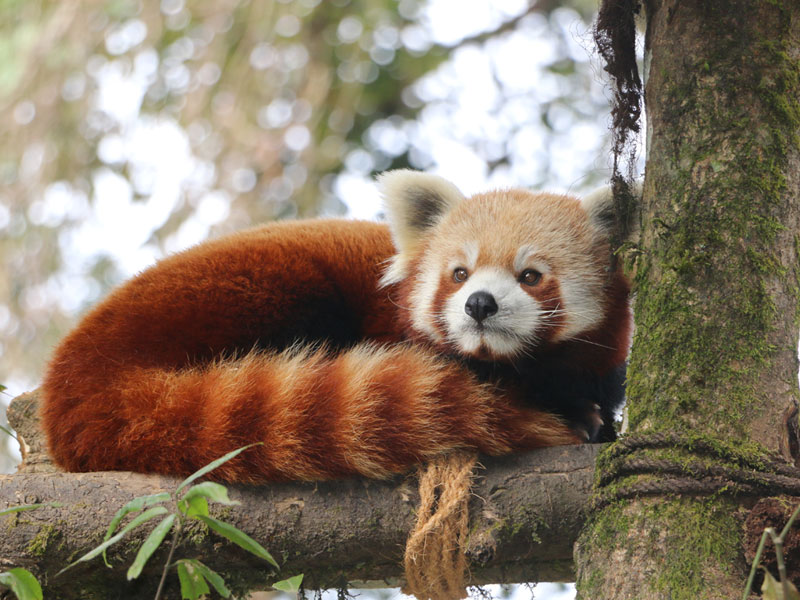
-
Medium sized bear – like mammal with a thick rusty to deep chestnut coloured coat. The muzzle, eye patches and the fronts of the large pointed ears are white along with broad white cheek patches. The tail is long, bushy and with ginger rings. The n
- DISTRIBUTION : Central Nepal to Arunachal Pradesh and this stretch includes Sikkim and Darjeeling Himalayas. The distribution is further extended from Arunachal Pradesh to Myanmar and China.
- FOOD : 90% of Red Pandas’ diet consists of bamboo leaves and the rest consist of bamboo shoots, fruits and berries.
- Breeding : Mating season is between January to March. Gestation period is 100 – 150 days to deliver 1 – 4 cubs in a litter during May / June. Survives and breed well in captivity.
GORAL
Nemorhaedus goral
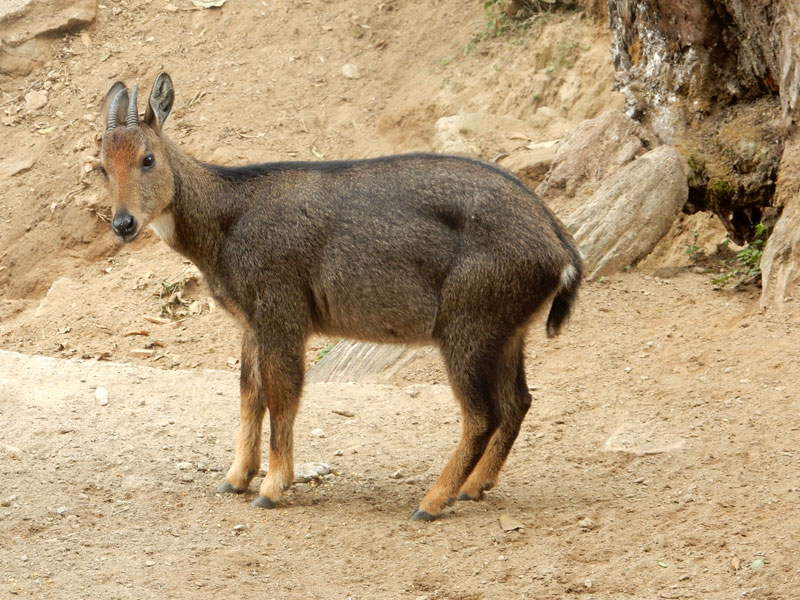
-
They are small ungulates with a goat-like or antelope –like appearance .The Himalayan Goral also known as the gray goral , is a small , rough-haired, cylindrical-horned ruminant native Himalayas.
- DISTRIBUTION : The Himalayan Goral,Naemorhedus goral,is native to northeastern India ,Nepal, Bhutan ,and northern Paskistan .
- FOOD : It feeds on leaves and associated softer parts of the plants mailnly grasses.
- Breeding : The female gives birth , usually to a single offspring , after a gestation period of 170-218 days.
BLUE SHEEP
pseudois nayaur
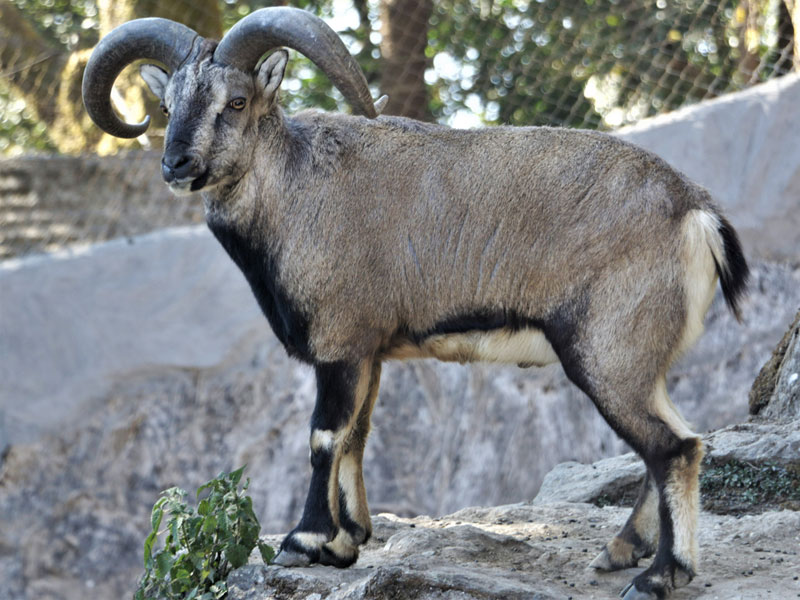
-
The Bharal or Himalayan Blue sheep has horns that grow upwards , curve out and then towards the back , somewhat like an upside down mustache.
- DISTRIBUTION : High Himalayas of Nepal , Tibet , China , Kashmri , Pakistan , and the republic of India . Montane region in the Himalayas and in Sichuan region of china at 3000-5,550 meters.
- FOOD : Grasses , lichens ,hardy herbaceous and mosses .
- Breeding : October and January with the young being born from may to July , Gestation Period-160 days , young per birth -1.
SAMBHAR DEER
Cervus unicolor
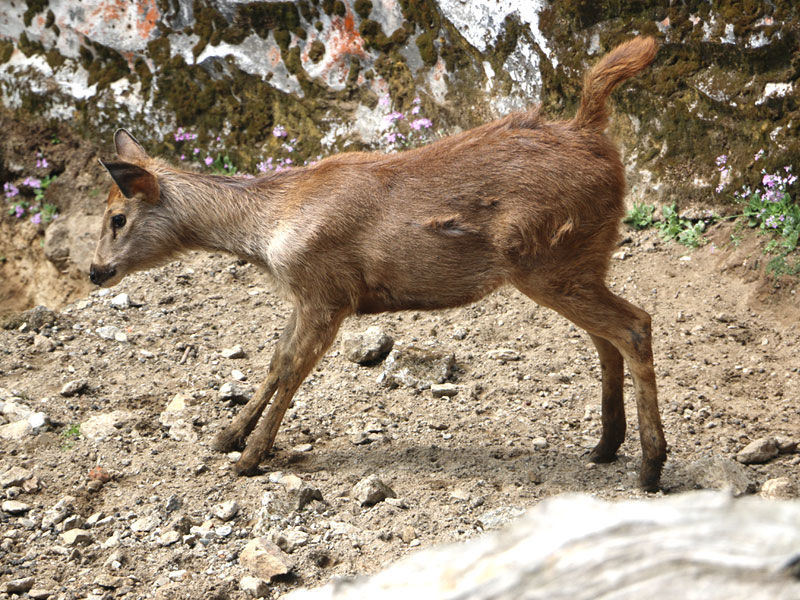
-
Largest Indian deer and carries the grandest antlers (males only). Coat is coarse and shaggy and forms a mane in stags. Power of scent and hearing are acute. Swim readily. The stags cast their antlers.
- DISTRIBUTION : The wooded districts of India, Myanmar and Sri Lanka.
- FOOD : Their food consists of grass, leaves and wild fruits.
- Breeding : The Stag’s harem is limited to a few hinds. The young are born during the monsoons. At present there is one adult male and two adult females Sambhar are on display. On 15th September 2007, calf was born from them in the Zoo itself.
BARKING DEER
Muntiacus muntjac
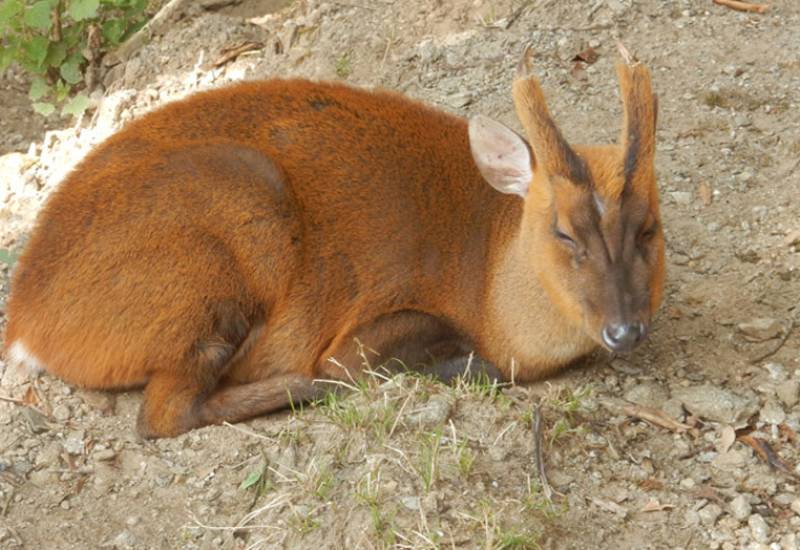
-
Derives its name from the sharp barking call it gives when alarmed. They are also known as Rib Faced Deer. The upper canine of the male are well developed and are used by the animal in self defense.
- DISTRIBUTION : Range over the greater part of Indo – Malayan countries and are found also in China, Formosa and Japan.
- FOOD :
- Breeding : They breed in all seasons, but rutting mainly takes place in the colder weather and 1 – 2 young are born after a gestation period of 8 – 9 months during the monsoon season. The Barking Deer is hunted throughout their range for the meat and skin. At present there are 12 numbers of barking deers in Dajeeling Zoo.
HIMALAYAN TAHR
Hemitragus jemlachicus
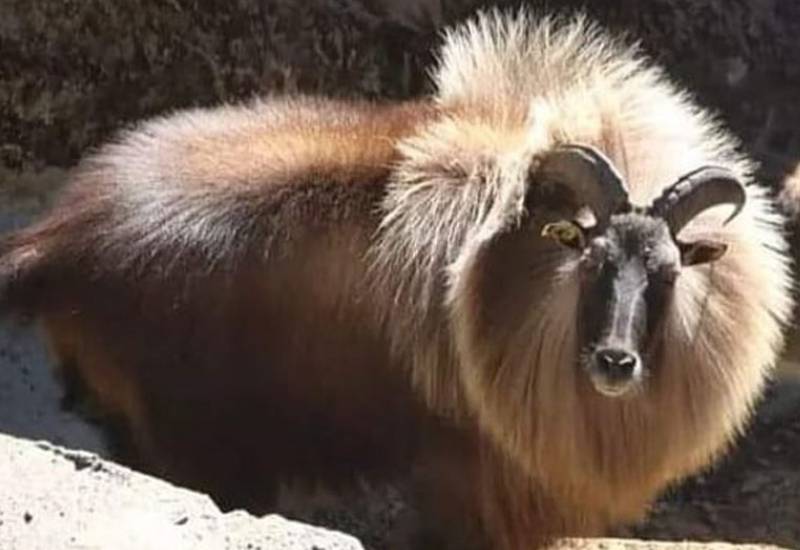
-
The Himalayan Tahr is a large ungulate related to the wild goat . They body is covered with coarse flowing hair on the neck and shoulder which grows in to a mane which is more prominent in the males than in the females.
- DISTRIBUTION : Throughout the Himalayas from the pir panjal to Sikkim and Bhutan.
- FOOD :
- Breeding :
HIMALAYAN PALM CIVET
pamuga larvata
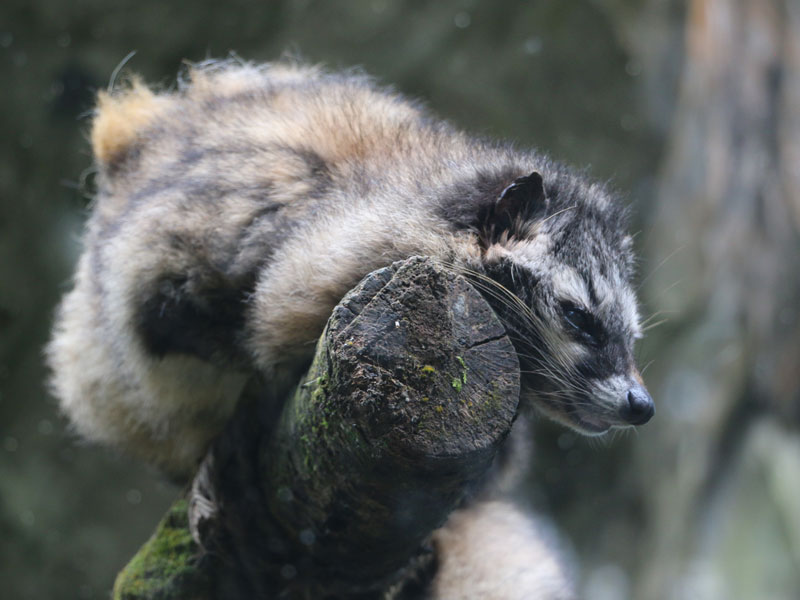
-
The masked palm civet or Himalayan palm civet is a species of civet spread across the Indian Subcontinent and Southeast Asia , which in recent times was considered to be likely vector of SARS.
- DISTRIBUTION : Kashmir, western , and eastern Himalayas , and the Assam hill ranges . Beyond our limits its ranges extends eastwards into Burma , and the Indo-Chinese and Malay countries , the Andaman Islands .
- FOOD :
- Breeding : Female can bear young twice per year , in litters of 1-4.
ASIATIC BLACK BEAR
Ursus thibetanus

-
The Asian black bear , the Himalayan black bear , or the Moon bear , is an Asiatic species of medium size bear with a distinctive with a distinctive white or cream “v” marking on its chest .
- DISTRIBUTION : In India , Kashmir, the Himalayas , Assam extending eastwards in to china and Japan. Southwards in to Burma and the Malay countries , west ward in to Baluchistan.
- FOOD :
- Breeding : Mating season is between May June and 1-3 cubs are born in winter after a gestation period of 2103 days.
JUNGLE CAT
Felis chaus kutas
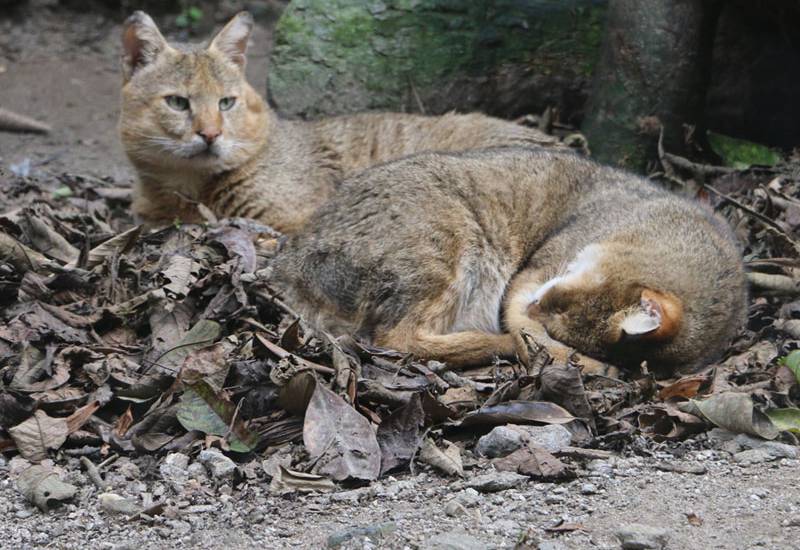
-
They are diurnal , activity tends to decrease during the hot noon hours. Rests in burrows, grass thickets and scrubs. Solitary in nature. Territories are maintained by urine spraying and scent marking; some males have been observed rubbing their cheeks on objects to mark them. Their diet includes prefers small mammals gerbils, hares and rodents and birds, fishes, frogs, insects and reptiles small snakes.
- DISTRIBUTION : iddle East the Indian subcontinent central and Southeast Asia Sri Lanka and in southern China.
- FOOD :
- Breeding :
LEOPARD CAT
Felis bengalensis
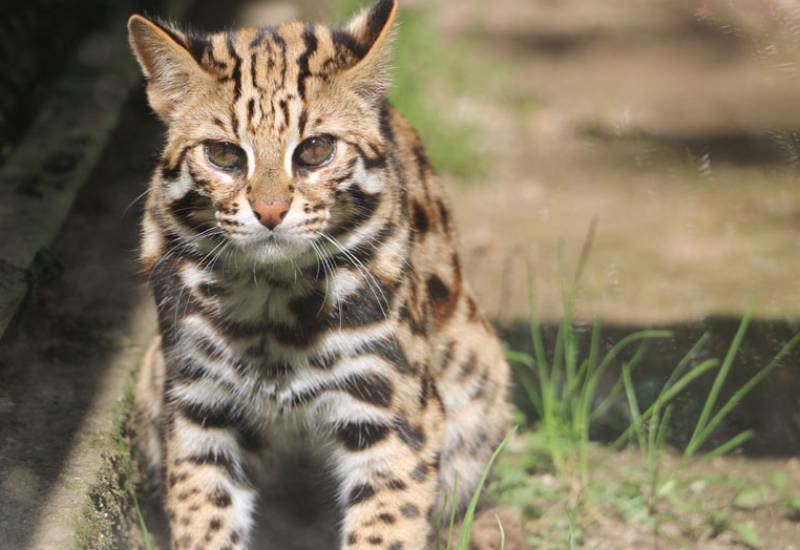
-
The Leopard Cat is a small wild cat, on average, the Leopard cat is as large as a domestic cat, but there are considerable regional differences.
- DISTRIBUTION : The Leopard Cat has the widest geographic distribution of all felines . It can be found in forest areas throughout Indonesia , Philippines , Borneo , Malaysia ,Thailand , Myanmar, Laos , Cambodia , China and Taiwan.
- FOOD :
- Breeding : The female usually gives birth to two or three kittens after 60 to 70 days gestation.
SLOW LORIS
Nycticelrus concang
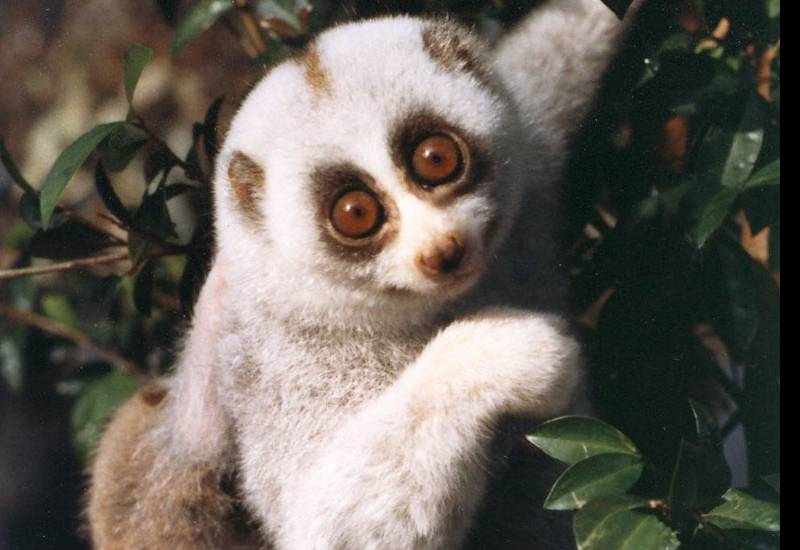
-
It is a interesting species belonging to the family of primates (monkeys). Its second toe is claimed others have flat nails. Very distinctive a brown stripe, marking the middle line of its back, owl like eyes and the brome circles around them. It is a very sky animal and is also known as Sharmili banar in Hindi language. Its movement is very slow and deliberate.
- DISTRIBUTION : In India, Slow Loris is found in the forests of Assam and Arunachal Pradesh.
- FOOD :
- Breeding : A single young is born after a gestation period of 3 months. Darjeeling Zoo has one male Slow Loris also for display.
Markhor
Capra falconeri
-
The markhor is the national animal of Pakistan and it is also known as the "screw-horn" or screw-horned goat. They are the largest of the wild goat species, with broad hooves and striking spiral horns that can grow to five feet long in mature males.
- DISTRIBUTION : They are distributed in the mountains of Central Asia, north eastern Afghanistan, parts of Kashmir in India, Northern Pakistan, Tajikstan & Uzbekistan.
- FOOD : They are herbivorous animal. Their wide hooves help them maintain stable footing when climbing their mountainous habitat. These crepuscular animals are herd animals. Males are territorial and defend their territory which can encompass several females
- Breeding : April- June
Siberian Tiger
Panthera tigris altaica
-
It is a subspecies of tiger and largest cat in the world. Siberian tigers differ from other tigers because they have fewer, paler stripes and also have manes.
- DISTRIBUTION : The Siberian tiger resides in a small region in the southeast region Russia and are found in small numbers in China and North Korea.
- FOOD : These carnivorous animals are solitary in nature and they mark their scent on trees to keep other tigers away.
- Breeding : Throughout the year

